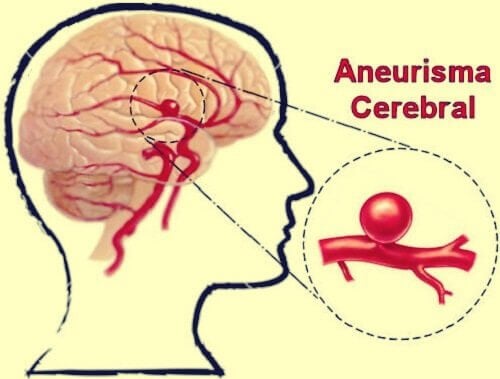A brain aneurysm is an enlarged arterial wall in the brain. The biggest problem with these vascular conditions is that they usually show no symptoms.
Thus, little by little and without the person noticing, this area grows with the consequent risk that it will eventually break. The consequences, if not acted on quickly, can be fatal.
- Most of us know someone who has suffered this delicate reality.
- Some people.
- Thanks to early detection.
- Were able to benefit from rapid intervention (such as a conventional embolization) to live a normal life without major consequences.
Other patients, however, suffer the effects of a broken aneurysm
In any case, there is a fact that should not be forgotten, which although it is a condition that usually appears between the age of 40 and 65, can also occur in young people and even children.
Sometimes certain genetic problems or malformations of the arteriostric veins cause these changes to occur in dangerous brain arteries.
Let’s look at more data below
Brain aneurysms can develop in anyone, regardless of age; however, they are more common in people over the age of 40 and especially in women.
A brain aneurysm is a vascular disorder that can appear in an artery or vein in the brain, blood flow builds up in a segment, and there is an expansion in a blood vessel, taking the form of a balloon.
On the other hand, as a study by the Department of Surgery at the University of Oklahoma School of Medicine explains, the location of nearly 85% of aneurysms is always the same: at the base of the brain, exactly in Willis circle.
It is also common to differentiate three types of brain aneurysms, depending on their shape, size, and location:
As we said at the beginning, it is common for a brain aneurysm to be asymptomatic, however, they have obvious characteristics when a rupture occurs.
That’s when we need to move on to quick action, so we need to consider the following clues:
Doctors often have different scales to assess the severity of brain aneurysm, the most common being the Glasgow scales (in case the person has lost consciousness) and the Hunt and Hess scale; in the latter case the following dimensions are valued:
Also, if we have a family history, it is advisable to perform certain tests and diagnostic tests, the most common way to identify the presence of a brain aneurysm before it ruptures is:
On the other hand, one aspect should be observed. Many people die without knowing they have a brain aneurysm. That is, all these cerebrovascular changes do not end in a rupture; the probability is not very high, but this can happen with the resulting risk.
Several factors are used when treating a brain aneurysm, the first is whether there was a pause or not, the second is the size, location, age of the patient and other associated neurological conditions.
However, the good news is that if early detection is available, treatments are effective and very complex surgery is not necessary; an endovascular approach is sufficient. These are the most common.
Finally, in more severe cases, doctors may opt for an operation that requires an incision in the skull and titanium devices are inserted to channel and treat the aneurysm.
In any case, all these treatments are very effective if the aneurysm is not broken, of course we are not always so lucky.
We are not always aware of its existence because these conditions are asymptomatic, however, it is necessary to take this information into account in all cases in order to be aware of it and know how to act.

